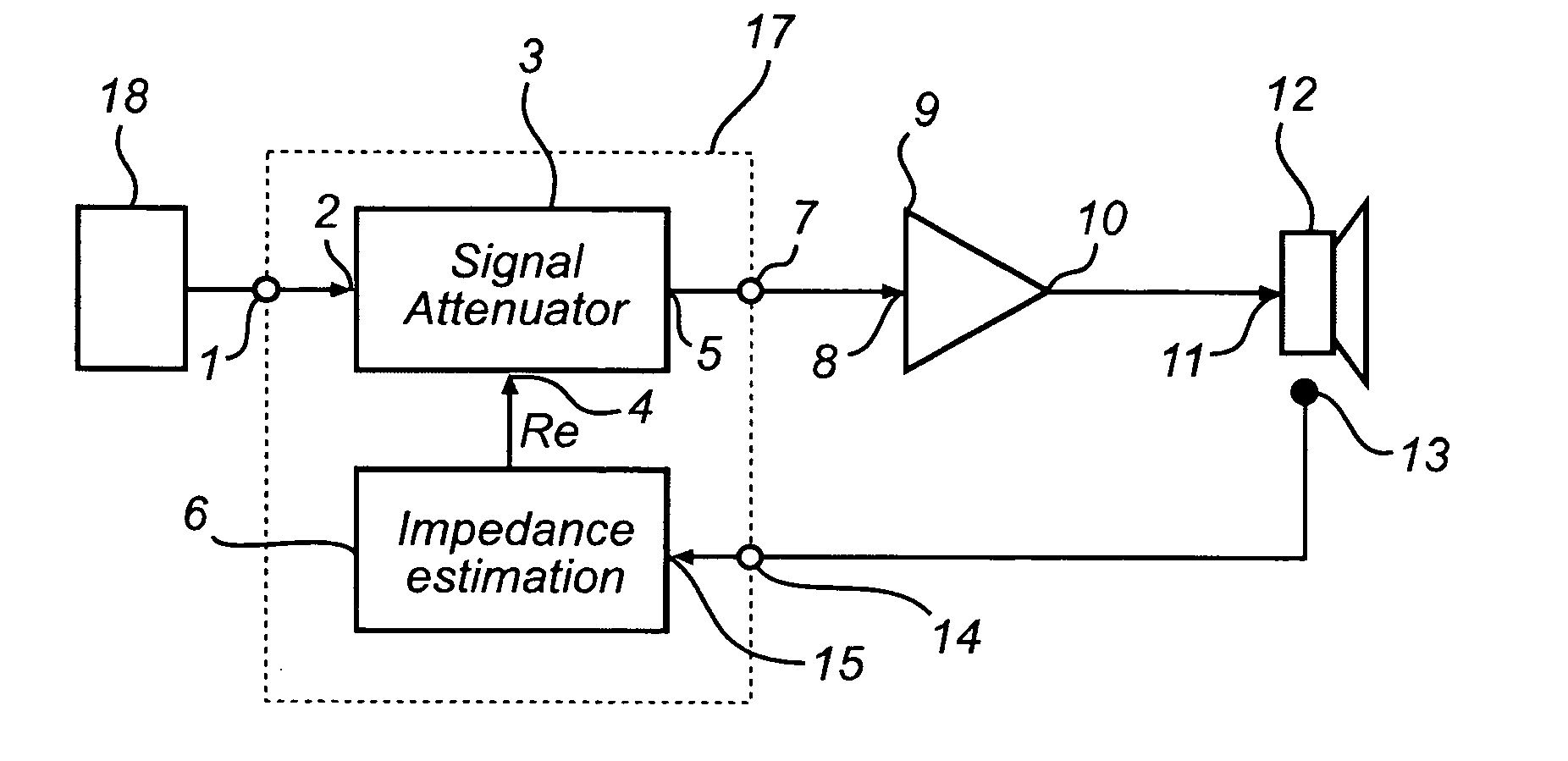Thermal protection of electro dynamic transducers used in loudspeaker systems
- Summary
- Abstract
- Description
- Claims
- Application Information
AI Technical Summary
Benefits of technology
Problems solved by technology
Method used
Image
Examples
Embodiment Construction
[0029]FIG. 1 shows a thermal protection system 17 intended to be used together with an audio power amplifier 9, and an electro dynamic transducer 12. The protection system 17 comprises an impedance estimator 6, and an attenuator 3. The thermal protection system may be implemented as a digital controller, e.g. a micro processor or a digital signal processor, arranged to execute a thermal protection algorithm to be described below.
[0030]In a preferred embodiment the input 1 of the thermal protection system 17 is connected to a digital audio signal source 18. The input 1 is then connected to the signal attenuator 3, performing an attenuation function based on an estimated value of the electrical resistance (Re) of the electro dynamic transducer 12, determined by the estimator 6.
[0031]The output 5 of the signal attenuator 3 is connected through the output 7 of the protection system 17 to the input 8 of an audio power amplifier 9. The output 10 of the audio power amplifier is connected t...
PUM
 Login to View More
Login to View More Abstract
Description
Claims
Application Information
 Login to View More
Login to View More - R&D
- Intellectual Property
- Life Sciences
- Materials
- Tech Scout
- Unparalleled Data Quality
- Higher Quality Content
- 60% Fewer Hallucinations
Browse by: Latest US Patents, China's latest patents, Technical Efficacy Thesaurus, Application Domain, Technology Topic, Popular Technical Reports.
© 2025 PatSnap. All rights reserved.Legal|Privacy policy|Modern Slavery Act Transparency Statement|Sitemap|About US| Contact US: help@patsnap.com



